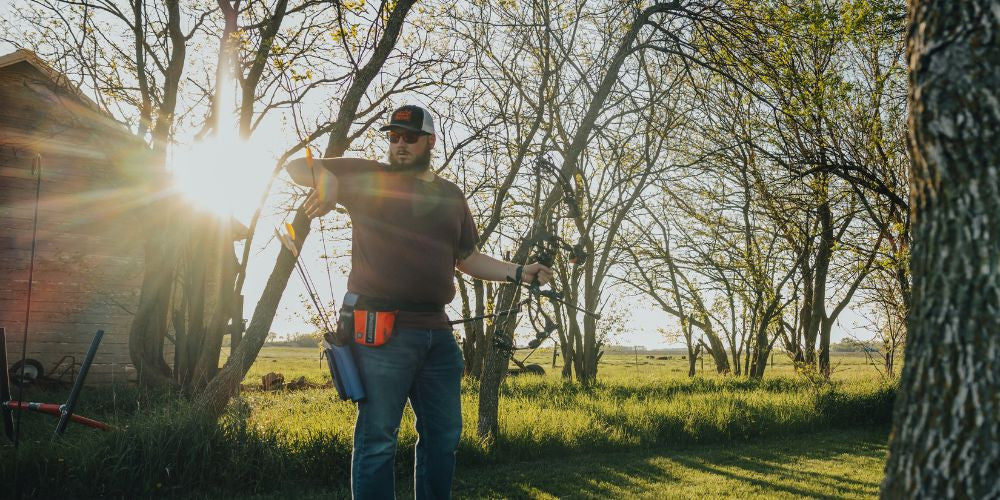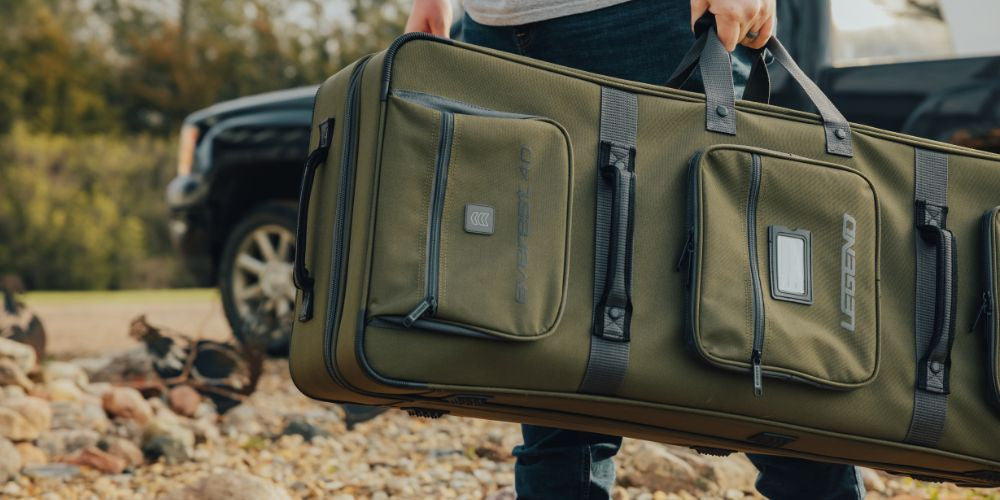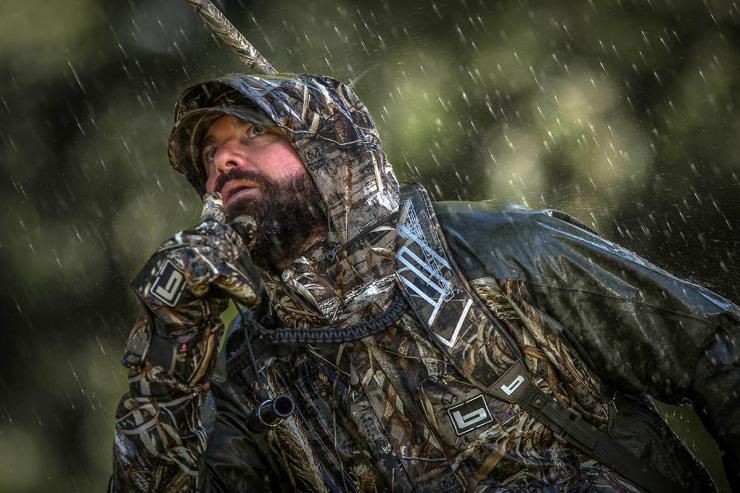Bowhunting is still one of the most enjoyable forms of archery. The feeling of hitting your prey is quite unmatchable, and it’s one that every archer should experience at least once. However, bowhunting is quite different from other forms of archery. While most archery forms will have you shooting at static targets, bowhunting requires aiming for targets that move, which can be relatively unpredictable.
Things get even trickier when it rains. Nothing quite puts a damper on a hunting trip like the sound of rain pellets washing down. Everywhere gets a bit bogged, the weather becomes cold, and even your prey might not be as easy to spot or track.
Rain is an unconventional situation that demands you take extra precautions, but you can still have an enjoyable and productive outing - in fact, rain can give you an edge as you go about your hunt. In this article, we’ll look into what you need to do as you prepare for a successful bowhunting session in the rain.
Your Guide to Bowhunting in the Rain

If you’re looking to hit the hunting trail in the rainy season, there are several things you would need to know and check off your box. Let’s get right into it!
First Things First - Stay Safe
Before you begin stalking prey and mapping out your trail, you must keep one thing in mind - your safety. Most experienced archers don’t have much of an issue with a small precipitation. However, with heavy rain comes the need to be acutely aware of your surroundings and to protect yourself.
Check the Weather
The weather can be very unpredictable. Be sure to check your weather forecast to know the expected rain level so you can prepare your mind and gear accordingly. If a thunderstorm is coming, you might want to take even more careful precautions. Understanding the coming weather will be critical in your mission to properly prepare for it.
Pack The Right Gear

Once you’ve confirmed the weather, the next thing you will need to do will be to pack your hunting gear. Ideally, your hunting gear should be able to withstand rain and wet conditions. Go for a sturdy and waterproof bow. A compound bow would be an excellent option as it is built to withstand extreme outdoor conditions.
We recommend using a high-quality bow case to ensure optimal protection and easy transport of your bow while you’re out in the rain. As an extra advantage, most bow cases come with compartments for storing and caring for archery equipment and accessories.
It is also a wise idea to wax your hunting gear, especially those with sensitive parts. Waxing will prevent them from getting soaked in the rain, protecting them from damage.
Moving in the rain can be a hassle, so avoid including unnecessary items while packing, as that may slow you down while on the move. Just remember to pack the essentials and leave anything that may affect your movement.
Related: 10 Things You Must Pack for an Archery Tournament
Protect Yourself Too

Just as you look after your hunting gear, you also want to ensure you are well protected. Hunting clothes are usually a subjective choice for anyone. But when it rains, you definitely don’t want to be caught off guard.
We recommend that you have these hunting clothes with you as you go out into the wild:
- A waterproof hat
- A camo rain poncho
- A thick jacket, depending on the rain’s intensity
- Insulated, waterproof gloves
- Strong, breathable, and thick boots will also be a good idea
The truth is that you might not feel so comfortable when you have to wear layers of hunting clothes while you’re out in the rain. However, the rainy season comes with an obligation for you to be especially careful. You don’t want to get sick, and you sure don’t want the rain to affect your ability to hunt for as long as you’d like.
Additional Tips for Bowhunting in The Rain
Keep Your Feet Dry
We already discussed the need for you to have the right hunting clothes. However, one area you need to be especially careful about is your feet. Keeping your feet dry is the most crucial step in warding off the cold. Even when you have thick rain boots on, you might have problems with preventing water from entering your socks and coming in contact with your feet - and this is one scenario you definitely don’t want to happen for the sake of your comfort.
To that end, we recommend wearing two sock layers. The outer layer should be thick and made of insulating wool, while the inner layer should be thin and made of moisture-wicking material to help your feet stay dry. For extra protection, you can tuck the end of your pants into your boots and pick up an extra pair of socks just in case.
Recognize the Opportunity in Heavy Rain
While it’s easy to believe that rain is your worst enemy when bow hunting, the truth is there are several leverages presented by hunting in the rain. For instance, while light rain doesn’t really hinder the movement of deer and most game, they tend to find places to hide and wait out the storm whenever there's a heavy downpour. Hence, during a heavy storm, you might not have many bowhunting opportunities (for safety reasons, it’s a good idea to wait out heavy storms). However, when the downpour starts to subside, they’ll come out in search of food and water. That rain break might just be the big break you need on your hunting trip.
Also, the environment will be very muddy and wet, making the animals rather sluggish, which creates an opportunity for you to capitalize. If you’re not scared of a little mud or dirt, this could be the perfect time to find a game.
Similarly, rain dampens the ground and makes your footsteps virtually silent. The sound of the raindrops can also help mask any possible noises you accidentally make while walking or preparing your shot. As with noise, rain also hides your scent in the woods. Both of these give you an edge, as most animals, particularly deer, are known for being incredibly sensitive. You can use these to your advantage and even explore terrains you’d ordinarily not want to try.
Be Mindful of The Wind

That said, the fact that rain presents opportunities doesn’t necessarily mean it will be your best friend either. Depending on the rain’s intensity, you might have to deal with a significant amount of wind. And if there’s any rain-related natural element that can adversely affect your shooting accuracy, it has to be the wind.
The upside to windy rains, however, is that it neutralizes many of your game’s natural advantages. They find it much more difficult to see properly with leaves and branches blowing all over the place. Their sense of smell is also negatively affected in windy conditions.
To use winds to your advantage, set up your stands and blinds based on the prevailing wind direction such that it blows away your scent from whichever path you expect a game to approach. Ideally, you should set up downwind of the expected trail. A crosswind setup will work as well.
Arrow flights can also be affected by wind. While a light wind isn’t likely to affect arrow flight, strong crosswind gusts can send it flying off course. The lighter the arrow weight, the higher its chances of being thrown around by the wind. We have an article that discusses how to master shooting in the wind - you might want to take a look at it for a refresher course.
Most importantly, check the wind speed and direction using a weather app before setting out. You should also carry along a wind indicator to double-check the wind on arriving at your hunting site because forecasts can change.
Invest In A Ground Blind

If you’re really serious about being incognito, then a ground blind might be an ideal tool for you to get. Essentially, ground blinds are makeshift structures set up on the ground to help you stay hidden while you hunt and provide an excellent cover when it’s pouring heavy. With a freer range of movement, ground blinds ensure that you don’t need to worry about scaring off a prey that just so happened to walk by because you needed to stretch a bit.
Ground blinds can be set up beforehand or at opportunistic spots when needed. They offer an ideal camouflage while also giving you more time to prepare your shot. You can place a natural blind behind a bush, tree, rock, or some other natural feature, or you could also go all out with a camouflage-material blind.
Don’t Take Risky Shots
This is another critical tip for bowhunting in the rain that you must never forget. It’s great to have confidence in your shots but remember that the weather can easily affect your shooting accuracy.
Thus, always remember only to take shots that you’re confident about, but you should also be fast when deciding. If you’re not comfortable shooting outside 30 yards normally, you might want to take extra precautions in the rain and only fire shots between 25 0r 20 yards.
Tracking Will Be A Challenge

When you fire a shot and hit your target but are unable to kill it, you’ll need to track the prey to complete the job. In itself, tracking can be quite tricky - once an animal has been hit, it tends to behave more erratically, so you can’t be certain what it’ll do. However, tracking prey in the rain is a different level of challenge.
The rain causes blood trails and hair to disappear much faster. So, once you fire a shot and connect with your prey but couldn’t kill it, you’d need to move much faster if you hope to finish the job. You might also want to invest in a strong flashlight to help with tracking. And, remember to be twice as careful while tracking game in the rain - protect yourself and be mindful of the risk.
Conclusion
Bowhunting in itself can be quite a challenge as you’re actively hunting animals that can be a bit unpredictable. When you throw in the rain variable, you’ll find that the need to be extra careful and sensitive increases significantly.
However, this doesn’t mean that hunting in the rain can’t be fun - or even productive. The rain provides several interesting opportunities for you as a hunter, and as long as you’re prepared, you should definitely have a good time out in the woods. As always, the first and most important tip for bowhunting remains to watch out for your safety.
 cust@legendarchery.com
cust@legendarchery.com 302 503 5767
302 503 5767 Sauk Village IL 60411
Sauk Village IL 60411


